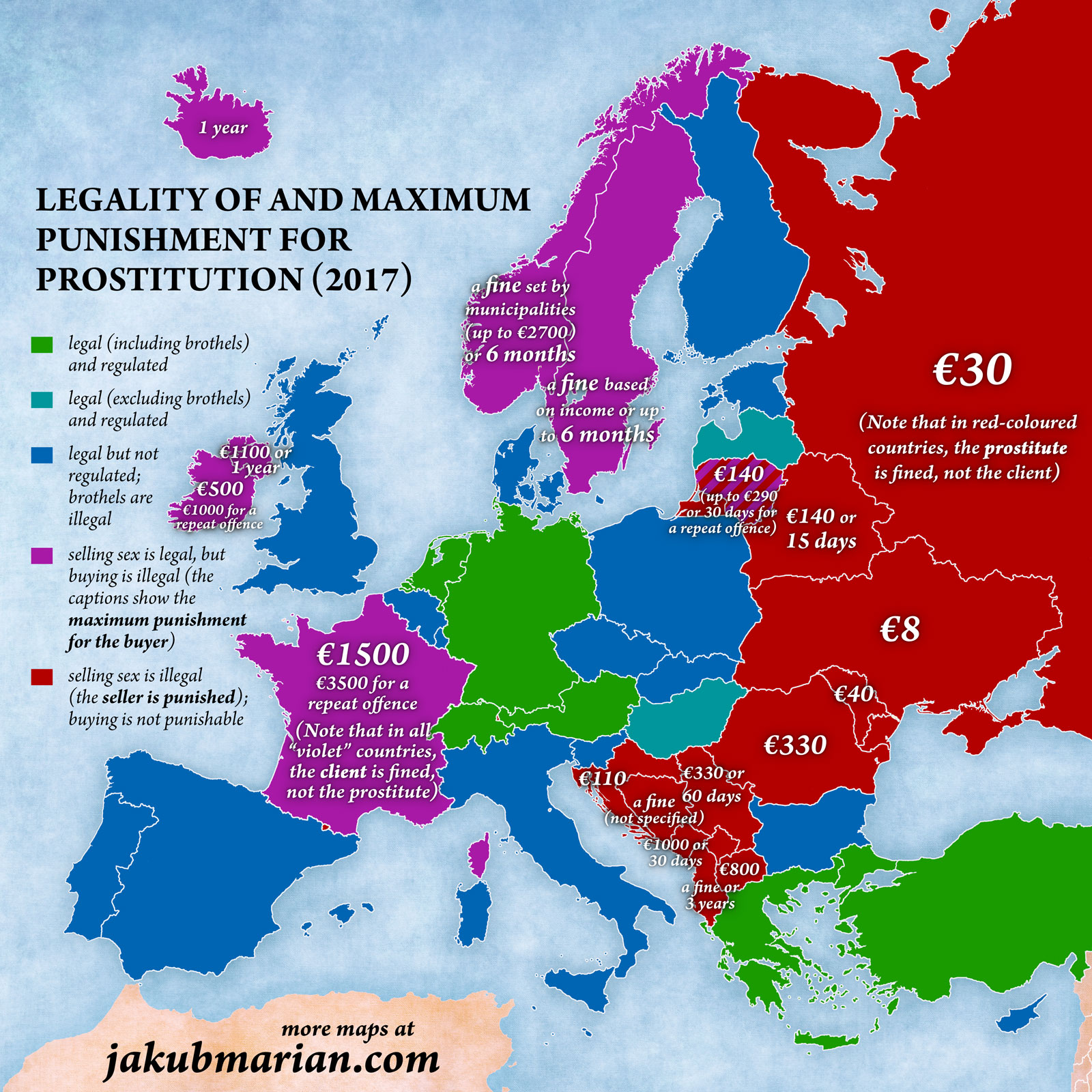The oldest profession in the world is subject to completely different laws in different parts of the world, and the situation in Europe in especially complicated. There are essentially four different ways in which European legislators approach prostitution:
The most supportive approach, which could be called the German model (because it has been commonly applied in German lands since the Middle Ages), is to treat prostitution like any other profession and enforce appropriate regulation (citizens can be officially employed or self-employed as prostitutes).
In this model, brothels are run as ordinary businesses (but may be required to obtain a special licence first). Countries following this model are shown in green on the map below. Note that Hungary and Latvia follow a similar model, but brothels are illegal. Somewhat surprisingly, Turkey and Greece follow the German model, but with strict regulations. As a result, the vast majority of prostitutes in these countries operate illegally.
The laissez-faire model (shown in blue) neither recognizes nor prohibits prostitution. Prostitutes operate outside the legal context and usually do not pay taxes. Brothels, pimping, and other forms of exploitation of others are prohibited (since there is no way to legally employ a prostitute), but brothels are usually tolerated and operate officially as massage parlours or by-the-hour hotels.
The Swedish Model (more recently also called the Nordic Model) prohibits paying for sex but applies laissez-faire policies towards prostitutes themselves. In other words, if a person has sex with another person in exchange for money, the paying side commits a crime, whereas the receiving side does not.
This model was first adopted in Sweden in 1999 but has since spread to other European countries, including France in 2016. The countries following this model are shown in violet on the map below, and the amount (or prison time) shown is the maximum punishment for the buyer according to law.
Finally, the prohibitionist model makes the act of prostitution (selling sex for money) illegal, which means that the prostitute, not the client, commits a crime or misdemeanour. Countries following this model are shown in red, and the amount (or prison time) shown is the maximum punishment for the prostitute.

Notet that in Lithuania, both selling and buying is illegal. To summarize, here’s a list of countries based on the current laws:
Let’s explain the methodology used to create the map. Whenever possible, I tried to work with primary sources, that is, the legal code of each country. Considering the number of different languages involved, it is fairly difficult to guarantee complete accuracy, but, to my knowledge, the map represents the most detailed review to date (22/10/2017).
The penalties shown in the map are denominated in the local currency in the legal code. To get the approximate amount in EUR, I used the exchange rates valid on 22/10/2017.
 Tip: Are you a non-native English speaker? I have just finished creating a
Tip: Are you a non-native English speaker? I have just finished creating a  Web App
Web App
